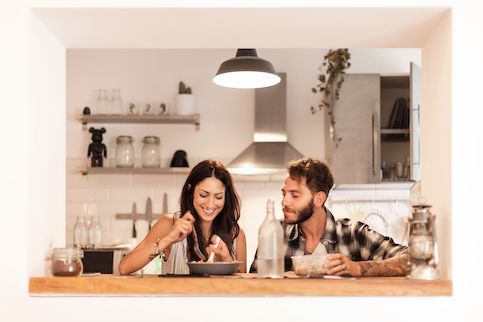The last few years have brought unprecedented challenges for many homeowners. If you haven’t been able to make your monthly mortgage payments, you may have recently received a letter from your lender letting you know that your property is in preforeclosure. Now, if you don’t take action, you may be in jeopardy of losing your home. This is an emotionally and financially devastating predicament to be in.
But while preforeclosure is a foreboding term and a serious situation, it’s possible to recover. Understanding what foreclosure is and what options borrowers have while in preforeclosure can help them avoid the loss of their home and a significant drop in their credit score.
What Is Preforeclosure?
Preforeclosure is the first step in the foreclosure process. It’s designed to give homeowners options to stay in their home before a foreclosure. Preforeclosure occurs when a homeowner misses several mortgage payments, prompting the lender to issue a notice of default. This is a legal notice that means you’re in jeopardy of the lender foreclosing on your home if you don’t quickly work to resolve the matter.
See What You Qualify For
Buy A Home
Discover mortgage options that fit your unique financial needs.

Refinance
Refinance your mortgage to have more money for what matters.
Tap Into Equity
Use your home’s equity and unlock cash to achieve your goals.
Preforeclosure Vs. Foreclosure: What’s The Difference?
The preforeclosure process consists of a few steps. When a homeowner misses 3 months of mortgage payments, they’re typically in default of their mortgage. That’s the unofficial beginning of the foreclosure process and the official beginning of preforeclosure.
When it becomes clear that you can’t make a monthly mortgage payment, the best and first action you should take is to contact your mortgage servicer. It may be the last step you want to take, but in most cases, a lender will work with a homeowner rather than letting them default without at least attempting a resolution.
Legal fees make the foreclosure process very expensive, so lenders try to avoid it if possible. Lenders can work with borrowers to arrange a mortgage forbearance – or a pause in payment – that helps them create a repayment schedule to avoid default.
How Does The Foreclosure Process Work?
When deciding to act on your missed payments, your lender will file a notice that could soon result in foreclosure. Let’s take a quick look at what the preforeclosure process involves – and what the foreclosure process involves, if it ultimately becomes necessary – once the homeowner falls behind on monthly mortgage payments.
Notice Of Default
Generally, lenders allow for 3 months of missed payments before sending the notice of default. The written letter notifies the homeowner that the lender will pursue legal action if they don’t pay the mortgage payments they’re behind on. The lender also gives public notice to the county recorder’s office to preserve their right to file a lawsuit with the court.
This officially begins the preforeclosure phase. Homeowners who don’t take action are in jeopardy of losing their home for good through the foreclosure process, which can last 3 – 10 months.
Sale Of The Home
The bank’s goal is to get the money they’re owed on the property. If the borrower remains unable to make payments and hasn’t communicated with the lender, the lender will initiate a judicial foreclosure or execute a deed of trust – or nonjudicial foreclosure. The method used will depend on the laws of the state where the property is located.
Often, an auction or trustee sale will take place. In either case, the lender’s goal is to sell the property to recoup as much of its losses on the loan as possible.
Auctions usually begin with a minimum bid of the amount owed on the loan. Then, the foreclosed home is sold to the highest bidder. If your home is sold during the auction, you’ll be required to move out.
What To Do If Your Home Goes Into Preforeclosure
If your home does go into preforeclosure, you have a few options, which we’ll explore next.
Consider A Loan Modification Or Refinance
Options are available for homeowners who’ve built equity in their home or seen their home appreciate significantly in value since purchase. This is especially true if the homeowner starts the refinance process before missing a payment. And, it’s another reason why speaking with your lender as soon as possible is important.
For those farther down the path to foreclosure, another option is loan modification. Essentially, it’s a rewrite of a homeowner’s current mortgage without the closing costs. This option will likely extend the life of your loan and, by spreading out the payments over more years, give you more affordable payments.
Try A Short Sale
You also have the option to sell your home during preforeclosure. Most lenders will accept a short sale if you’re in preforeclosure. In a short sale, the buyer can sometimes pay the lender less than the balance of the mortgage. Because the lender may accept less than what they’re owed, the lender must approve the short sale. Banks often agree to this because it saves them the time and expense of foreclosing on a property.
Get A Deed In Lieu Of Foreclosure
Another way to avoid foreclosure proceedings is to surrender your ownership rights to the lender through a deed in lieu of foreclosure. Once the deed is signed, the owner vacates the property. In return, the lender is free to sell the property immediately.
In some cases, the lender can seek reimbursement from the former homeowner on any losses from the sale. Ask about the lender’s policies concerning this option before signing away rights.
A deed in lieu of foreclosure can be attractive to people who want to avoid a drawn-out foreclosure process and lessen the impact to their credit score.
Consider Borrowing To Catch Up On Missed Payments
For borrowers who hate asking for help, asking friends and relatives for a loan will be unappealing, but the best way to get out of preforeclosure is catching up on all missed payments. Once the mortgage is brought current, many lenders will stop the preforeclosure process.
Borrowing from someone you know may be uncomfortable, but if it’s possible, you’re better off doing it before the foreclosure process begins. That’s because it will reduce the impact on your credit history and the hit on your credit score.
View Your Refinancing Options
See recommended refinance options and customize them to fit your budget.
Preforeclosure FAQs
Below are some frequently asked questions about the preforeclosure process.
What does preforeclosure mean?
When a homeowner misses 3 months of payments on their mortgage, the lender will most often send them a notice of default signaling they’ve entered preforeclosure. This is often an opportunity to try to work with the lender before entering foreclosure.
How do I know if my house is in preforeclosure?
Your lender will reach out to you with a notice of default for missed payments. When this happens, you’ll want to contact your lender and begin exploring options.
What’s the difference between foreclosure and preforeclosure?
Preforeclosure is the first step in a foreclosure when the lender has given a notice of default to the borrower. During this time, the homeowner has an opportunity to work with the lender to either keep the home or negotiate a short sale. Foreclosure means the home can now be put up for sale by the lender and an eviction notice will be served if the homeowner hasn’t vacated the property.
How long is the preforeclosure process?
The exact terms of the foreclosure and preforeclosure process vary by state and mortgage lender. So, the amount of time a house will be in preforeclosure is hard to know for certain, but it’s most often a minimum of 30 days.
The Bottom Line: You Can Escape Preforeclosure By Taking Action
Homeowners with a preforeclosure home have several options to get out of home debt and minimize damage to their credit score.
If you’re a homeowner in preforeclosure, speak with your mortgage servicer today. It may be worth considering your refinancing options and applying for a refinance, depending on your situation.

Miranda Crace
Miranda Crace is a Staff Writer for Rocket Companies, bringing a wealth of knowledge about mortgages, personal finance, real estate and personal loans for over 10 years. Miranda is dedicated to advancing financial literacy and empowering individuals to achieve their financial and homeownership goals. She graduated from Wayne State University, where she studied PR writing, film production and film editing. In her spare time, Miranda enjoys traveling, actively engages in the entrepreneurial community, and savors a perfectly brewed cup of coffee.












